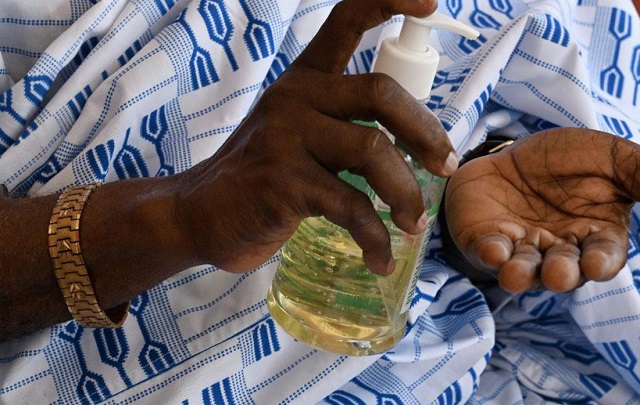
Why using soap and water is better
| THE INDEPENDENT | Hand soap and hand sanitiser might seem interchangeable, but they are meant for different circumstances. While sanitiser is smart to have on hand for when you are on the go, healthcare professionals agree that nothing beats a thorough hand wash with regular soap and water as Alex Berezow, microbiologist and Vice President of Scientific Communications at the American Council on Science and Health, explains.
The effectiveness of hand sanitiser
The main ingredient in most hand sanitisers is isopropanol (rubbing alcohol) or ethanol (the principle ingredient in alcoholic drinks). Alcohols have a long history as an effective disinfectant against some viruses and bacteria, as long as the solution has enough alcohol in it.
Hand sanitiser is a practical backup if you don’t have access to soap and running water. But in general, sanitisers aren’t as effective as hand washing. Plus, hand sanitisers can expire and require proper technique and diligence to work properly.
“People generally don’t use enough volume of hand sanitiser or spread it around their hands as far as they should,” says Berezow.
To use hand sanitiser correctly, apply the specified amount as directed by the product’s label to the palm of one hand, and rub the sanitiser thoroughly over both hands until they feel dry. The CDC advises that this process, much like hand washing, should take 20 seconds.
Hand sanitiser is efficient at killing some microbes, but not all of them. Here are some germs that it can’t protect you against: Cryptosporidium. A parasitic infection that cause breathing and gastrointestinal issues, Norovirus. A viral infection that can cause vomiting and diarrhea, and Clostridium difficile. A bacterial infection that can cause intestinal upset and inflammation.
What to look for in hand sanitiser
Alcohol-based sanitisers should contain at least 60 percent alcohol. But any concentration between 60 to 95 percent will do the job.
A concentration of less than 60 percent alcohol can reduce the growth of germs but it won’t eradicate them completely. Therefore, beware of hand sanitisers with too little alcohol, or hand sanitisers that use alcohol substitutes, which are not as effective or recommended.
Is hand sanitiser bad for you?
There’s no evidence that hand sanitisers are harmful to your health. However, if you use hand sanitiser too much, the alcohol can cause minor skin irritation.
“Using too much hand sanitiser dries your hands out, and they can crack and bleed. If you have a skin condition like eczema, this could exacerbate it,” says Berezow.
Alcohol-based sanitisers can also cause alcohol poisoning if more than a couple of mouthfuls are swallowed, so be sure to store any hand sanitiser out of reach of children.
Why soap and water is better than hand sanitiser
Although using hand sanitiser is better than nothing, the CDC and other health experts say that soap and water is the best way to practice good hand hygiene and protect yourself.
Hand sanitiser is a disinfectant and therefore kills germs. But it doesn’t do anything to physically remove germs from your skin like soap and water do. “Soap is a detergent, which is why it gets all sudsy and bubbly. Detergents work by dissolving both water and oil, so it simply washes the microbes off your hands like it would wash the grease off a dinner plate,” says Berezow.
The CDC says that hand washing, while it doesn’t directly kill germs, reduces the number of germs on your hands. Soap and water are more effective than hand sanitisers, especially when your hands are visibly greasy or dirty. After eating, playing sports, if your hands are soiled and greasy, then hand sanitisers aren’t as effective.
The CDC recommends that you wet your hands with running water, turn off the tap, and then scrub your hands with soap for at least 20 seconds. If you don’t wash for at least 20 seconds, it makes a huge difference. Here’s a look at some different washing methods and times to give you an idea of how much cleaner a thorough 20-30-second scrubbing provides.
Using soap is much more effective than hand sanitiser because the soap contains surfactants, which are substances that lift oil and microbes from the skin. Keep in mind that there is no difference between using plain soap and using “antibacterial” soap, as they are both proven to have the same effectiveness.
After you have lathered with soap, rinse your hands under clean running water and then immediately wipe them with a clean towel. Since germs can be transferred more easily to and from wet hands, it is important that you dry your hands as soon as you finish rinsing them. Soap and water will effectively prevent the spread of viruses and bacteria, but it will do no good against a current infection. However, washing your hands will help you prevent spreading your illness to other people.
The bottom line
Berezow makes it clear, “soap is a detergent that washes away the microbes, while alcohol in the hand sanitiser directly kills microbes. But soap and water are most effective at removing the microbes.” The microbes alcohol-based sanitisers cannot kill will be washed away with proper handwashing.
The CDC recommends using an alcohol-based hand sanitiser of a 60 percent and up concentration only when soap and water are not available.
If your hands are soiled, find access to running water and soap as soon as possible as hand sanitiser may not be very useful when dirt and grease are present.
So, clean soap and water are still the best defense against germs. Wash your hands anytime you are preparing or eating food, after you use the washroom or change a diaper, after blowing your nose, touching an animal, or the garbage. Take special care if you are looking after someone who is sick to help prevent spreading the illness.
****
Source: Internet
CLICK TO READ ONLINE MAGAZINE HERE
 The Independent Uganda: You get the Truth we Pay the Price
The Independent Uganda: You get the Truth we Pay the Price



